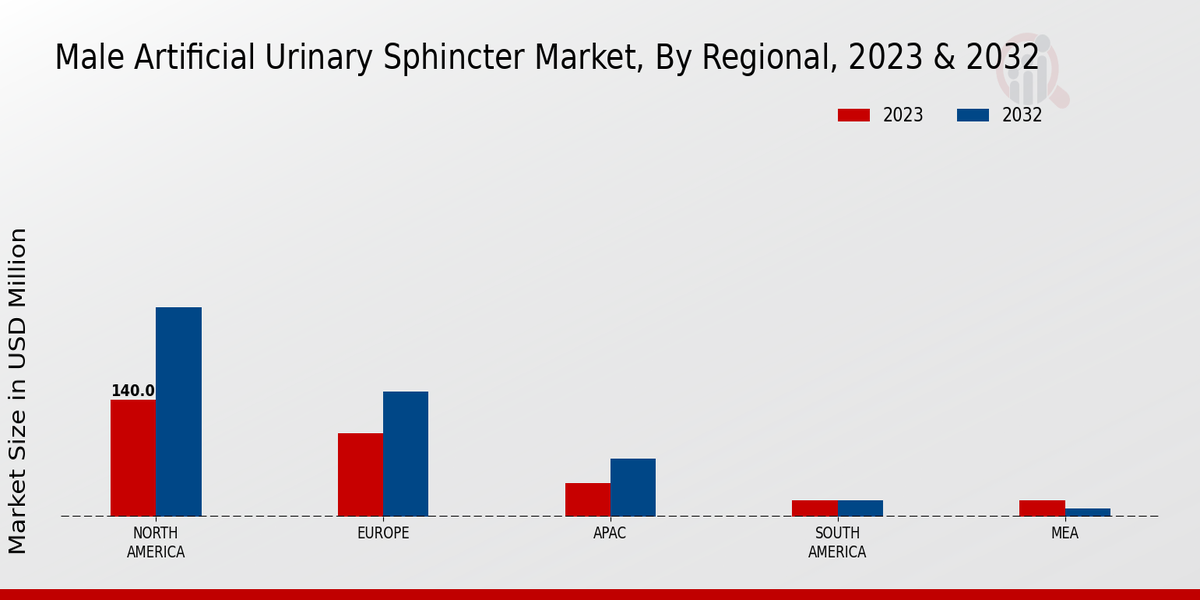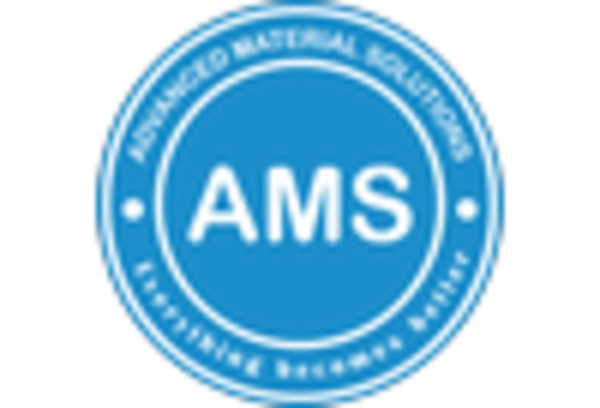Growing Geriatric Population
The Male Artificial Urinary Sphincter Market is significantly influenced by the growing geriatric population. As life expectancy increases, the number of elderly individuals requiring medical interventions for urinary incontinence is also on the rise. It is estimated that by 2030, the global population aged 60 and above will reach 1.4 billion, creating a substantial market for urinary incontinence solutions. This demographic shift necessitates the development of more effective and user-friendly artificial urinary sphincters, catering to the unique needs of older patients. Consequently, manufacturers are likely to invest in research and development to create products that are not only effective but also easy to use for this age group.
Rising Healthcare Expenditure
The Male Artificial Urinary Sphincter Market is benefiting from the increasing healthcare expenditure observed in various regions. Governments and private sectors are allocating more resources towards healthcare, which includes funding for advanced medical devices. This trend is particularly evident in developed nations, where healthcare budgets are expanding to accommodate innovative treatments for chronic conditions such as urinary incontinence. As healthcare systems evolve, there is a growing emphasis on improving patient outcomes, which drives the demand for high-quality artificial urinary sphincters. This increase in investment is likely to foster a competitive market environment, encouraging manufacturers to enhance their product offerings.
Increasing Incidence of Urinary Incontinence
The prevalence of urinary incontinence among men is a significant driver for the Male Artificial Urinary Sphincter Market. Studies indicate that approximately 30% of men over the age of 60 experience some form of urinary incontinence, which can severely impact their quality of life. This rising incidence is attributed to various factors, including aging, prostate surgeries, and other medical conditions. As awareness of treatment options increases, more patients are seeking effective solutions, thereby propelling the demand for artificial urinary sphincters. The market is expected to respond positively to this trend, with an anticipated increase in product offerings and innovations aimed at addressing the specific needs of this demographic.
Technological Innovations in Medical Devices
The Male Artificial Urinary Sphincter Market is experiencing a surge in technological innovations that enhance the efficacy and safety of these devices. Recent advancements in materials and design have led to the development of more durable and biocompatible sphincters, which are crucial for patient satisfaction and long-term use. For instance, the introduction of minimally invasive surgical techniques has reduced recovery times and improved outcomes for patients. Furthermore, the integration of smart technology into these devices allows for better monitoring and management of urinary incontinence, potentially increasing adoption rates. As a result, the market is projected to grow at a compound annual growth rate of approximately 6% over the next few years, driven by these technological advancements.
Enhanced Patient Education and Support Programs
The Male Artificial Urinary Sphincter Market is also being propelled by enhanced patient education and support programs. As healthcare providers focus on improving patient engagement, there is a concerted effort to educate patients about urinary incontinence and available treatment options. This increased awareness is crucial in reducing the stigma associated with urinary incontinence, encouraging more men to seek help. Support programs that provide information on the benefits and functionalities of artificial urinary sphincters are likely to lead to higher adoption rates. As patients become more informed, the market is expected to see a rise in demand for these devices, ultimately contributing to market growth.


















Leave a Comment